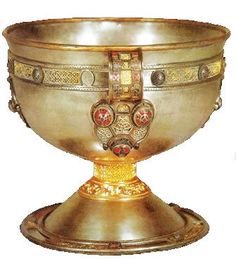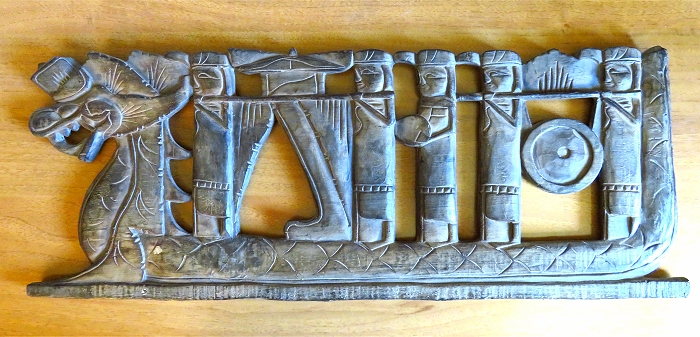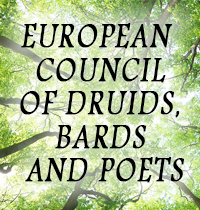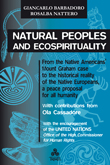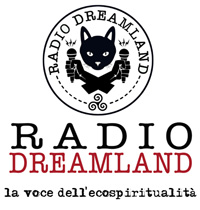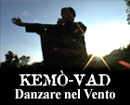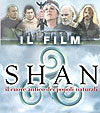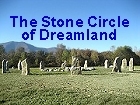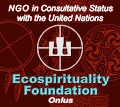|
One of the most important legends of the origins of ancient Celtism is undoubtedly that of the Grail. This magical object was considered the origin and perennial source of the Druids’ knowledge. Later, the legend of the Grail was also considered to be the origin of Alchemy. The reference to the knowledge of which the Grail is the bearer seems to be sanctioned by the acronym of its Latin name Graal: “Gnosis Recepta Ab Antiqua Luce”. The legend of the Grail can be summed up in a syncretism drawn from various traditional references: At the beginning of the history of mankind, a divine creature, identified by some in the figure of the mythical Elohim, came down from the sky. Semi-divine creatures, guardians of the primordial Eden, used the emerald on its forehead to make a cup of knowledge which was given to Adam and Eve. When the two progenitors were driven out of the earthly paradise, the Cup passed from hand to hand, from the time of Eden to the land of Egypt, where it was kept by Osiris, who used it to make his kingdom great. Upon the death of Osiris by the hand of Seth, this cup - the Graal - was lost. It was found by Ekhnaton, who tried to restore its ancient splendour, but after his death, it was seized by Seth’s children and brought to safety on Hyperborean Earth, where it was jealously hidden and protected. Centuries later, King Arthur and the Knights of the Round Table, led by Merlin the Druid, tried to retrieve it, carrying it across the European moors to the castle of Camelot, to re-establish the lost Eden. The legend of Phaeton According to ancient Druidic shamanic tradition, the legend of the Grail lies at the heart of its identity and culture and is linked to that of Phaeton by various events that historicise it with precise facts about the past. The tradition of ancient Druidism tells the story of a god who came down to earth in ancient times on his golden chariot, landing in what is now the Susa Valley in Piedmont (Italy), to bestow his knowledge on the people of the time. He can be compared to the Elohim in the Bible. An event that would change the history of the planet and create the prodromes of the rise of the human species. According to ancient Druidic shamanic tradition, Phaeton came down from the sky with his great golden chariot, landing in the centre of the Susa Valley in Piedmont at the foot of what is now the Rocciamelone mountain, known in Celtic as Roc-Maol. At that time, the area was covered by the sea, creating islands, the main one being Roc-Maol. He was accompanied by two golden metal assistants, like Hephaestus, the Vulcan god in Greek mythology, and Han-si, a god featured in Chinese mythology.
His intention was to create a civilisation on a planet devastated by the presence of the great Saurians. He organised the creation of the monastic-warring Order of Za-basta, an initiatic school which allowed him to pass on his knowledge. According to Druidism, this Order inspired the Order of the Templars. The monastic-warring Order was made up of two experiential areas: 1) the Kemò-vad, a gentle martial practice which prepared the individual for the martial art; 2) the Hahqt’bà, a complete martial art. When the School was up and running, before leaving the planet Phaeton sent his best students, the Ard-rì, to every continent to continue his work of civilisation. The legend of Phaeton, between history and myth The legend of Phaeton is present in many different cultures of the planet, all of which are substantially similar: 1) the Apache legend of Ga’an, the “spiritual dancer” who taught the dance of the spirit to help the Native Peoples evolve; 2) the African legend of Nyambè also aimed at helping the spiritual health of the Natives by teaching them the art of sacred dance; 3) the ancient Egyptian legend of Thoth, who taught sacred dance to lift the Egyptian people; 4) the Chinese legend of Huang Ti, who came down from heaven to Earth, taking up residence by the Yellow Sea, aided by his powerful metal assistants. There are subsequent interpretations of the legend of Phaeton in the culture of the mainstream world, which reflect the confusion about what happened in ancient times: The classical interpretations of the legend of Phaeton refer to the versions of Ovid Nasone (40 B.C. -Metamorphoses) and Diogenes Laertius (190 A.D.). According to both, Phaeton, the son of the Sun god, incapable of driving his father’s solar chariot, fell to Earth in an area that we can now identify as Northern Piedmont in Northwest Italy, somewhere between two rivers, the Dora and the Po. According to Greek mythology, in order to prove his divine descent to Epaphus, Phaeton begged his father to let him drive the Sun chariot, but due to his lack of experience, he lost control of it. The horses ran wildly through the sky, first climbing too high, burning a part of the sky which became the Milky Way, then descended too close to the Earth, devastating Libya which became a desert. The people called to Zeus for help and the god intervened, becoming so angry that he threw a thunderbolt at Phaeton, who fell at the mouth of the river Eridanus, possibly near what is now or in the municipality of Alfonsine. According to some mythographers, Zeus caused all the rivers to overflow, destroying the human race except for Deucalion and Pyrrhus (the deluge related to disaster of the Black Sea). In his Timaeus, Plato (400 B.C.) gives us his take on the case of Phaeton, interpreting it as a legend that was meant to lend continuity to a historical fact. When asked for further details, Plato answered: “Because the story told also by you, of Phaeton, son of the Sun, who, having yoked his father’s chariot, but being unable to lead it along his father’s path, burned everything on Earth, also perishing himself, being struck by a bolt of lightning, has the semblance of a fairy tale. The truth lies in the deviation of the bodies that revolve around the Earth and in the sky, and the destruction of everything on Earth by severe fire at great intervals of time…”. Dante also cited this legend in his Divine Comedy, referring to the ecliptic (the path travelled by the Sun in the geocentric system) as “…the road that Phaeton was unable to drive”. It is also mentioned in his Inferno in relation to the flight over the demon Geryon as “I do not think that there was greater fear when Phaëthon let go his horses’ reins, whereby, as still appears, the sky was burned”. Again, in the Divine Comedy, Dante describes the conical pyramid produced by the impact of the rebel angel on Earth. At the top of this pyramid he places Eden. In 1700, the myth of Phaeton was revisited by Freemasonry with the figure of the Egyptian prince Eridanus, who reached the confluence of the rivers Po and Dora and founded the city of Turin in Piedmont. After a mad race on his horse-drawn chariot he fell and died in the river Po. The theme of the emerald table remains in Medieval esoterism as a reference to the knowledge of Hermes Trismegistus, synonymous with the knowledge of Thoth-Phaeton. Phaeton and the City of Rama There is a clear narrative similarity between the legend of the Grail and that of Phaeton: a divine creature of nature that falls from the sky to Earth manifesting itself, as we seen later, also as a knowledge-bearing entity. Consequently, the legend of Phaeton seems to merge with that of the Grail, so much so that we see the representation of the symbolic representation of the same event in two different legends. When the time came to leave the Earth, he used the metal of his chariot to build a large golden wheel with a hole in the centre, in which he placed all the knowledge that he left as a gift to mankind. After he had returned to heaven, his reliquaries and the great golden wheel were collected by the Ard-rì, his pupils, to be kept in the Temple of Fire, a cave on the side of the Holy Mountain. The city of Rama was built up around this temple. It was expanded several times by legendary heroes, extending its power to all known lands. But its greatness regarded the fact that it guarded the ancient knowledge, the Shan, the archaic name of the Grail; a light that radiated throughout the Earth and was the basis of the knowledge of the Druids of the time. The city of Rama seems to play the utopian role of the castle of Camelot in the Arthurian saga of the Grail. According to the Druidic traditions of the valley, the ancient city of Rama was home to the Grail, probably the great golden wheel, left as a gift by Phaeton. And as with the ancient Eden, when Rama was destroyed, the Grail, or Phaeton pierced wheel, was hidden to protect it from the invaders of time. The city of Rama was protected by a great Dragon who interpreted the cosmic forces of the universe triggered by the primordial Void. The Dragon taught the knights of time to fight and dance in the wind and introduced them to the mystical knowledge of the Shan. People came from all over the world to see the great circle of stones and to know its secret: it held the secret of Shan. When the waters of the Black Sea carried the mother civilisation away, Rama was the only city left to bear witness to the ancient power of the Dragon. The millennia have erased it but the knowledge it held is still alive in the traditions of the whole Earth. Even today, the circle of stones is said to still exist, but be invisible, revealed only on the night of Samain to those who know how to search. On that night, all the inhabitants of the place, both human and otherwise, visible and unseen, meet among the eternal majestic stones and celebrate the return to the ancestral Earth. |
The New Earth Circle
Farewell, Giancarlo
|
